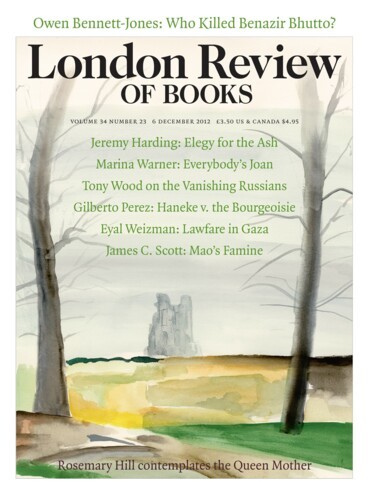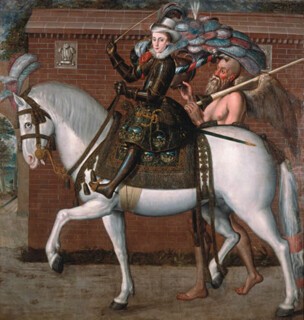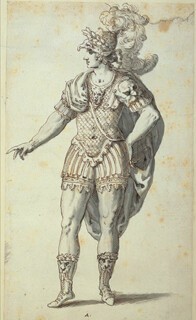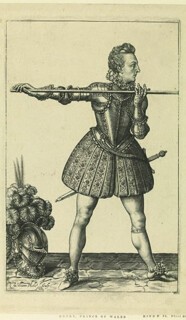Two of England’s best remembered kings, Henry VIII and Charles I, stand in the shadow of lost princes. Each had an elder brother who was Prince of Wales and expected to succeed. Had Prince Arthur and Prince Henry lived the Reformation and the Civil War would have followed different courses or might not, it is sometimes suggested, have taken place at all. In the case of Prince Henry, the son of James I who died in 1612 at the age of 18, romantic counterfactual possibilities began to gather round his memory almost at once. Those who found King James unsatisfactory for his reluctance to enter the Thirty Years’ War or opposed his plan to marry Charles, now heir, to a Spanish princess, found in the figure of the dead prince a once and future hero, a Protestant warrior who would have redeemed Britain’s honour.
The National Portrait Gallery’s exhibition (until 13 January), which is scholarly in detail and spectacular to view, is an attempt to rediscover the truth behind the later myths. What it largely reveals is an earlier set of myths, for Henry’s person was freighted from birth with political, dynastic meaning. A portrait at the age of two shows him like a tiny pope, looking out warily from beneath a high embroidered bonnet. His christening at Stirling Castle – he was tactfully named in honour of his godfather Henri IV and his Tudor forbears Henry VII and VIII – involved the rebuilding of the Chapel Royal and cost 100,000 Scots pounds. As heir to his father, then James VI of Scotland, and, it was hoped, after the death of Elizabeth, heir also to the English throne, Henry IX would in time ensure the future of the house of Stuart as king of a united Britain.
Elizabeth died in 1603 and James duly succeeded her. Thus, exactly a century after Henry VIII’s investiture as Prince of Wales, another Prince Henry came to London with his parents. In the exhibition a family tree, designed to reassure the English that this was not an invasion but merely another instance of those ‘most Happy Unions Contracted betwixt the Princes of the Blood Royall’ of the two kingdoms, shows James at the head and his great grandmother Margaret Tudor at the centre of an illuminated pedigree in which the graceful twining of Tudor roses disguises the somewhat oblique nature of his descent.
From this point the exhibition seems to burst into life and colour, with Henry at the forefront of the iconographic campaign to promote the Stuarts and the still novel idea of Britain. In contrast to the bookish, staid depictions of his father, Henry appears dynamic, active and warlike. We see him practising with a pike, on horseback and at the hunt. His armour, two suits of which are on show, is richly gilt with royal emblems among which the Scottish thistle comes to dominate over the Tudor rose. Most striking of all, amid the conventional portraits that surround them, are the three large pictures of Henry by Robert Peake the Elder. Peake deployed the drama of scale to heighten the action as Henry draws a sword or sheathes one or, in the most impressive, the first equestrian portrait of an English royal subject, rides out before the allegorical figure of Father Time. Though Time is winged, Henry draws him on, pulling him by the forelock in his wake.
To what extent such images bring us closer to the prince’s personality or offer proof of any real difference from his father, or clash with him, is a moot point. The exhibition suggests that the contrast was not least a way of presenting a royal family with more facets, embracing as many desirable attributes of monarchy as possible. How often Henry actually posed and how much Peake worked from a single image, ageing it over the years, also remains unclear. Around Henry his family appear in the usual style of the day, flattened almost into pattern amid stuffs, ruffs and attributes. His sister, Elizabeth, a marriageable pawn at seven, stands stiff and poignant against a wooded landscape in which luckier, less important people, walk and ride at liberty.
Allegories of kingship were further animated in masques, some written by Ben Jonson and staged by Inigo Jones. Jones’s surviving drawings show Henry’s costume for the role of Oberon. Like the architectural backdrops for the stylised tournament that marked his investiture as Prince of Wales with an Arthurian theme of lost chivalric virtue, the drawings show the late Renaissance breaking through a chrysalis of lingering medieval sensibility. Jones had yet to make the second tour of Italy that would enable him to transform English architecture as surveyor of the king’s works. In one of the most interesting and unexpected sections of the exhibition, on Henry’s commissions for buildings and garden design, Jones is shown to have been overtaken in the prince’s favour by the more up to date Florentine, Costantino de Servi.
De Servi seems to have won over his young patron with ambitious designs for the rebuilding of Richmond Palace which required the demolition of a number of nearby buildings (not all in royal possession) and the construction of vast pleasure grounds overlooked by an enormous statue of Neptune. None of this was done, but in Henry’s award to de Servi of a salary of £200, four times Jones’s, there is something like a glimpse of a personal taste that was forward looking, though impressionable and perhaps too easily swayed by an ambitious architect in full flow.
Henry’s illness, probably typhoid, came on suddenly during preparations for his sister’s marriage and it is with his death that the reality of his life becomes most vivid. In the pale portrait of his mother in mourning, the small bronze horse which his younger brother Charles, who idolised Henry, brought to his sickbed to try and comfort him, and the stark wooden figure, now headless, that is all that remains of his funeral effigy, a family in shock steps out from the conventions to suggest that however illusory the hope that surrounded him in life, the sorrow at Henry’s death was profound.
Send Letters To:
The Editor
London Review of Books,
28 Little Russell Street
London, WC1A 2HN
letters@lrb.co.uk
Please include name, address, and a telephone number.




